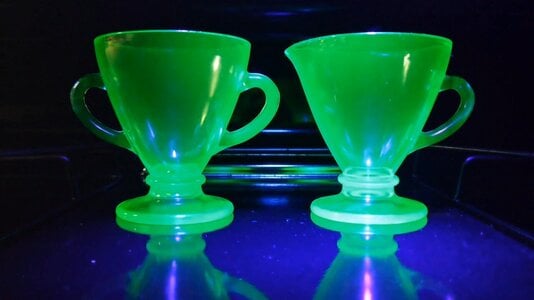ItsJustAnt
Rough_Rock
- Joined
- Jun 23, 2022
- Messages
- 18
This looks like vaseline glass.
 . I have neodymium magnets, a cheap lighted microscope from Amazon, and a basic diamond tester, a LWUV light, and a scale. I apparently need to invest in a refractometer if I continue with any more gemstone purchases lol, any other suggested tools for a beginner?
. I have neodymium magnets, a cheap lighted microscope from Amazon, and a basic diamond tester, a LWUV light, and a scale. I apparently need to invest in a refractometer if I continue with any more gemstone purchases lol, any other suggested tools for a beginner?Just to be clear, this is NOT a spinel - even synthetic spinel is a misnomer. A synthetic stone would have all the properties of a natural stone, but it is made in a lab. An imitation or simulated stone is one that appears to resemble a natural material but is actually something else altogether, and also made in a lab or factory. I do not know why these types of stones have come to be called "synthetic spinel" when at best they are "simulated spinel." They can be most accurately described as glass. If you google synthetic uranium spinel, you will find lots of examples.
I know a decent amount about glass, thats usually why I go to these estate sales! Depression era Glass and Mineral Specimens are my main venture. I collect uranium glass actually, here's my sugar and creamer set from the early 30s:. I have neodymium magnets, a cheap lighted microscope from Amazon, and a basic diamond tester, a LWUV light, and a scale. I apparently need to invest in a refractometer if I continue with any more gemstone purchases lol, any other suggested tools for a beginner?
I actually guessed a spinel to my fiance, but couldn't find anything about their UV reactiveness. Now that you've posted that one, that would definitely still be my guess also! Thank you!
We've definitely seen it before on this forum! It can also be called uranium glass or synthetic green spinel.